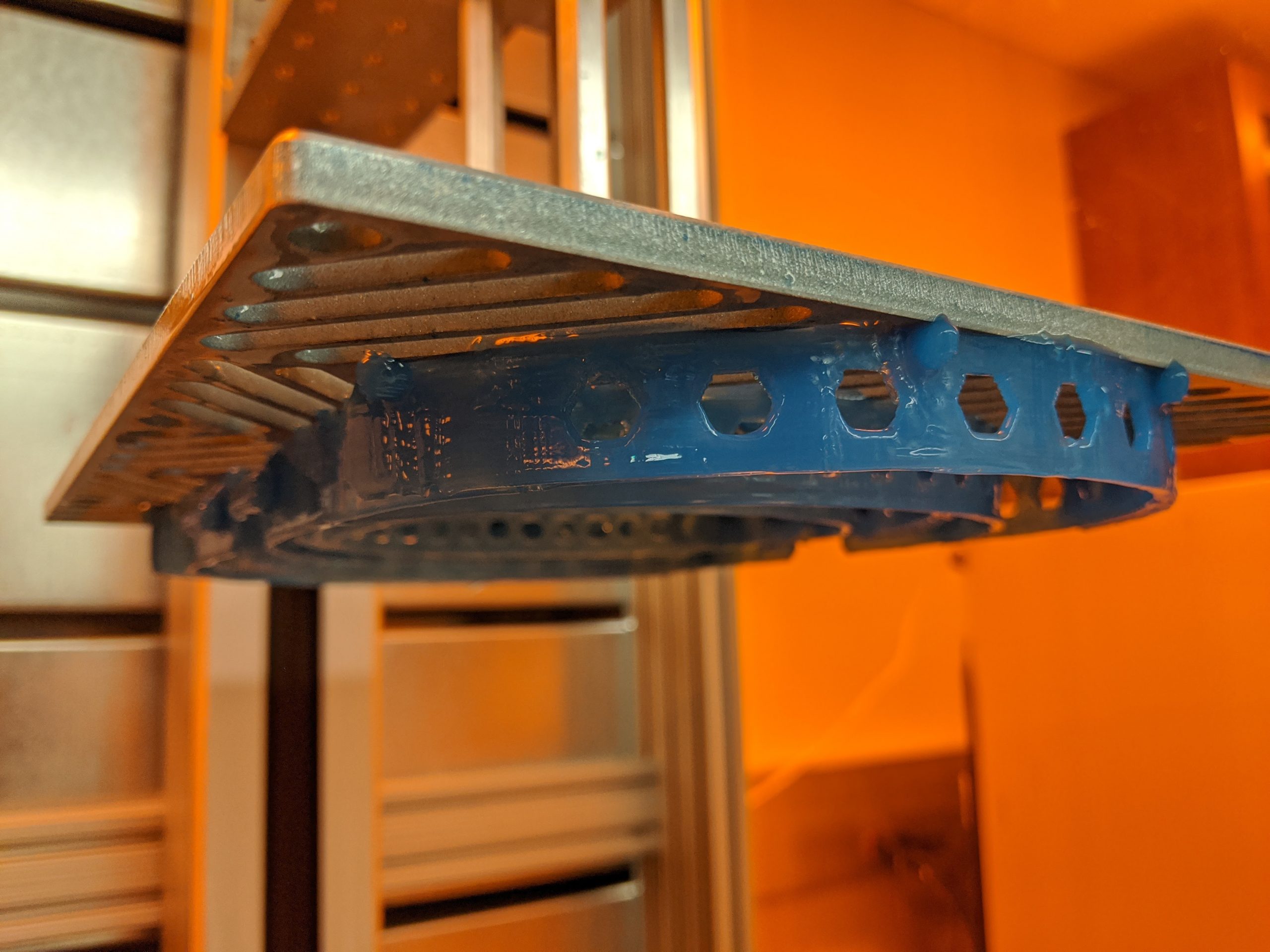News
Futuristic technology prints 1,000 face shield components per day
March 30, 2020

News Coverage: Crain’s Chicago, WBBM Radio, CBS TV Chicago, WGN TV Chicago, FOX News, New York Post
Northwestern University researchers have demonstrated the ability to generate 1,000 components for face shields per day — with a single 3D printer.
A critical piece of personal protective equipment (PPE), face shields protect health care workers from the novel coronavirus (COVID-19) as they treat patients.
When Northwestern researchers Chad A. Mirkin and David Walker heard about the PPE shortage in hospitals, their team sprang into action. In October, Mirkin and his research group, in a breakthrough article in the journal Science, unveiled a new 3D printing technique called “high-area rapid printing” (HARP), a 13-feet-tall printer with a 2.5 square-foot print bed that can print about half a yard in an hour — a record throughput for the 3D printing field.
“Even fleets of 3D printers are having difficulty meeting demand for face shields because the need is so enormous,” Mirkin said. “But HARP is so fast and powerful that we can put a meaningful dent in that need.”
Parts are produced at a rate of 1,000 per day by running the printer 24/7. Volunteer team members are working in six-hour shifts to keep the production cycle continuously ongoing.
Mirkin is the George B. Rathmann Professor of Chemistry in Northwestern’s Weinberg College of Arts and Sciences and director of the International Institute of Nanotechnology. Walker is an entrepreneur-in-residence at Northwestern. Along with fellow Northwestern researcher James Hedrick, Mirkin and Walker invented the technology underlying HARP and founded Azul 3D, Inc., a company that has licensed HARP intellectual property (U.S. patent application 62/815,175).
Face shields comprise three components: a sturdy plastic headband, a clear plastic sheet and elastic. The plastic sheet clips into the headband, which is then secured to a wearer’s head with a stretchy elastic band.
The Azul 3D team will lead the headband printing and has partnered with a local manufacturing company to provide the laser-cut clear plastic shields. A third partner is sanitizing and packaging the face shield components into easy-to-assemble kits, which will be supplied to area hospitals. The team notes that the face shields can be washed and reused, and is now addressing the regulatory requirements to put the shields into use.
Mechanically robust 3D printed parts
HARP relies on a new, patent-pending version of stereolithography, a type of 3D printing that converts liquid plastic into solid objects. HARP prints vertically and uses projected ultraviolet light to cure the liquid resins into hardened plastic. This process can print pieces that are hard, elastic or even ceramic. These continually printed parts are mechanically robust as opposed to the laminated structures common to other 3D-printing technologies. They can be used as parts for cars, airplanes, dentistry, orthotics, fashion and much more.
A major limiting factor for current 3D printers is heat. Every resin-based 3D printer generates a lot of heat when running at fast speeds — sometimes exceeding 180 degrees Celsius. Not only does this lead to dangerously hot surface temperatures, it also can cause printed parts to crack and deform. The faster it is, the more heat the printer generates. And if it’s big and fast, the heat is incredibly intense.
The Northwestern technology bypasses this problem with a nonstick liquid that behaves like liquid Teflon. HARP projects light through a window to solidify resin on top of a vertically moving plate. The liquid Teflon flows over the window to remove heat and then circulates it through a cooling unit.
“Our technology generates heat just like the others,” Mirkin said. “But we have an interface that removes the heat.”
Mirkin says HARP will be available commercially in the next year. The team is already working on a second printer that will double the throughput of the existing one.
Mirkin also is a professor of biomedical engineering, materials science and engineering, and chemical and biological engineering in the McCormick School of Engineering; professor of medicine in the Feinberg School of Medicine; and a member of the Robert H. Lurie Comprehensive Cancer Center of Northwestern University.
Editor’s note: Mirkin, Walker and Hedrick have financial interests in and affiliations with Azul 3D, Inc. Northwestern University has financial interests (equity, royalties) in Azul 3D, Inc.